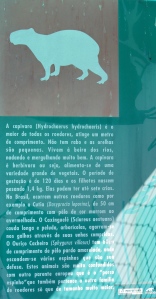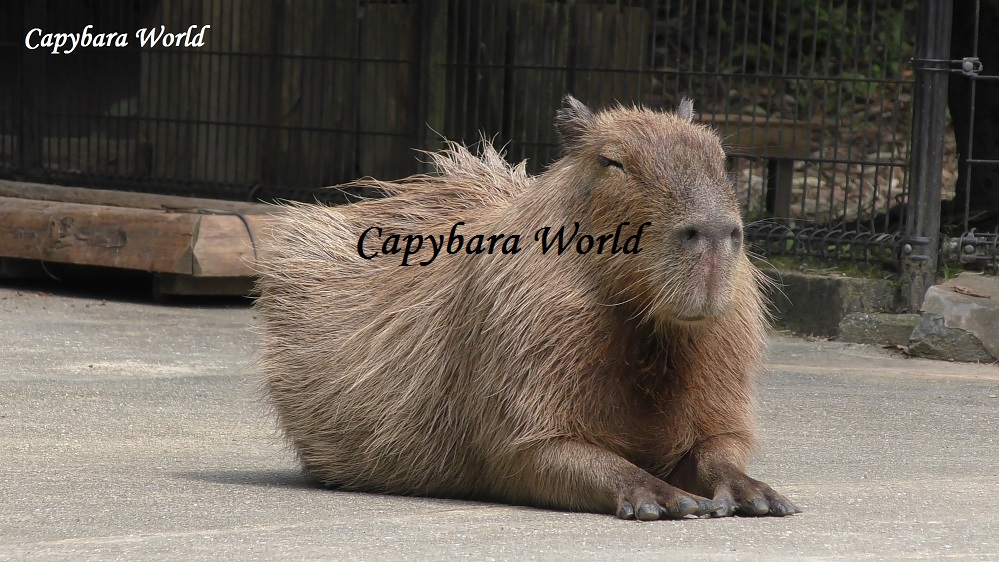My quest to find capybaras in Brazil did not fare well in Rio de Janeiro. Yet, this breathtaking city stands resplendent even without these charming creatures. Still, the allure of urban capybaras beckoned enticingly!

The Lagoa, offering a view towards the canal connecting to the Atlantic Ocean. The buildings in the distance overlook Ipanema Beach.
In Rio, Lagoa Rodrigo de Freitas is a lagoon known for its capybara sightings. The area is adorned with abundant water, grass, and plenty of habitats within the city.

The core of Rio de Janeiro exists beyond those mountains.
We circumvented the lagoon (easier said than done) and halted at a park with promising capybara habitat.

Wild capybaras produce pelleted poop, akin to deer or sizable guinea pigs! Hibbye’s excrement resembles this when left to dry in the sun, especially after a diet rich in bamboo.
Sam discovered some capybara droppings!

Typical urban capybaras
We finally spotted some capybaras! But hold on a second…

Preto

Salpicado

Bigodes

Tonto

Batata

Malhado

This bar offers a view over the lagoon with flat capybaras staked around.
It’s subtle, yet capybaras can be found everywhere in small forms.

Capybara wheel design

Capybara tree hangings

Capybara window decor

Capybara plushie?

I could definitely use several dozen of these in my garden.
How difficult could it be to manufacture a few of these?

No, they aren’t real. They are actually PLYWOOD.
So we opted to see some actual capybaras and planned to return at night.

Red-rumped agouti (Dasyprocta leporina)
Excitedly, many people pointed us towards Campo de Santana, where capybaras were supposedly seen! However, they turned out to be agoutis. These rabbit-sized rodents were seen only in that location, though they are more common further north.

In Brazil, they are known as Cutias! How fitting!
Agoutis are also quite adorable. Only their back half gets fluffier, giving them a very comical appearance.

They get fed corn by the park employees.
You’re here for the capybaras, right? Well, here they are!

Capybara (Hydrochoerus hydrochaeris)
You caught me! This area is right outside the zoo, known as Fauna Footbridge. It is an open area where the animals are below while you walk above. Although it’s spacious, it could benefit from more vegetation. It is partially open and still under development, much like many projects here.

A pair of approximately six adult capybaras

Approximate translation to the left
The capybara (Hydrochoerus hydrochaeris) stands as the largest rodent, growing up to a meter in length [39”]. It lacks a tail and has small ears. This herbivorous animal thrives by the riverside, being adept at swimming and diving. Its diet consists of various vegetables. Each gestation lasts 120 days, producing cubs that weigh around 1.4 kg [3 pounds] at birth. They can give birth to as many as seven pups. Brazil is home to other rodents, including the Agouti (Dasyprocta leporina), which is 50 cm [20”] long with a brown to reddish-brown hue. Another is the Brazilian Squirrel (Sciureus aestuans), distinguished by its long, furry tail, which it uses to cling to branches with its extended nails. The Hedgehog (Sphygurus villosus) measures 60 cm [24”] in length and features yellowish-brown fur that conceals its defensive spines. These creatures are often mistaken for a different rodent family, such as the European “porcupine,” which is significantly larger.
[Something like that…]

An adult and a slightly older baby
They shared their space with a few tapirs, some larger hoofed animals, turtles, and ostriches, all coexisting harmoniously.

A male capybara a bit away from the others
Compared to Hibbye, these capybaras have denser hair. Their coarse fur provides sun protection but not warmth.

The warm water would be perfect for Hibbye.
Hoping for more capybaras? Just take another look at these ones and imagine they’re new.

Finally leaving?

Remember the bar by the lagoon that we visited?

With a pleasant breeze, they offered shawls to everyone.
Though live capybaras were absent, Capycoppy contentedly enjoyed this one.

From any perspective, Rio looks stunning.
While this concludes our tale, I’m already plotting a return trip. Upon my return to Rio and a prolonged stay at this bar, I’m confident I’ll spot some live capybaras.

Palaphita Kitch



